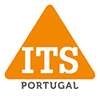
Based on a session that took place at the ITS European Congress in May, this webinar delved into a significant conversation warranting broader exposure: the narratives of Intelligent Transport Systems (ITS) during the war in Ukraine.
Dr Johanna Tzanidaki, Chief Innovation Officer at ERTICO – ITS Europe, moderated the discussion on the important contribution of Intelligent Transport Systems (ITS) in situations where human lives are in great danger.
Dr Tzanidaki shared with the Webinar participants that this panel discussion is about the use of ITS as a tool to save lives in times of war and natural disasters. In conditions of war, safety is not linked to traffic incidents or speed limits, but it is absolutely related to life-and-death situations of survival. Wildfires, flooding, earthquakes and war, as is unfortunately the case with the aggressions in Ukraine, are examples of such situations of survival.
Navigating Uncertainties: ITS Impact on Urban Mobility
Setting the stage, President of ITS Portugal, and Chief Strategy Officer of ARMIS ITS, Pedro Barradas, emphasised how uncertainty in our lives affects societies and, more particularly, managing traffic flows. Examples such as the impact of the COVID-19 pandemic and the subsequent global lockdowns have encouraged cities to reconsider public spaces for pedestrians, cyclists, and other active modes of mobility. This necessitates both physical and digital infrastructure should exhibit flexibility at all times so that they can adapt and serve the needs of society at a particular moment, as there is no guaranteed norm. In addition, societies face the great challenge of reducing emissions and repurposing mobility to address climate change, which is why cities are implementing urban vehicle access regulations (UVARs) and low-emission zones.
ITS and natural disasters, as elucidated by examples of earthquakes in Morocco and Turkey, also highlight the significant need to identify critical corridors and establish governance structures for effective emergency responses. Traffic management in these scenarios needs to incorporate risk assessment and crisis scenario planning when establishing critical corridors and governance structures for effective emergency responses. Focusing on the crux of the discussion, Mr Barradas cited the ongoing conflict in Ukraine as an example and mentioned how the role of traffic management helps to ensure the safety and movement of people and goods in crisis situations.
ITS in Conflict Zones: The Stories from Kyiv
In the Ukrainian capital of Kyiv, resilience in transportation systems began before the outbreak of the conflict. Oleg Polovynko, Advisor to the Mayor on Digitalisation in the City of Kyiv, shared his presentation with perspectives from before the conflict when Kyiv faced a growing challenge: as the population more than doubled and the number of vehicles increased, it put immense pressure on the city’s road infrastructure, raising the question of how to efficiently manage the city’s traffic and public transportation system. Instead of solely expanding road networks, the city focused on enhancing public transportation. This shift included automated fare collection systems, electronic tickets, and diversified payment options. However, the outbreak of war in 2022 brought unforeseen challenges, prompting the City to adapt its transport services and guide not only traffic flows but also its citizens to bomb shelters during air attacks.
Kiev’s use of its transportation Digital app, served its citizens with a lifeline to real-time information on air raid notifications and evacuation routes. The app also offers vital services such as information on available pharmacies and car services, which enhanced Kyiv’s robust infrastructure, supported by cybersecurity and redundancy measures.
ITS was employed to improve safety and efficiency, even in conflict. Collaboration with telecom operators expanded data sources for traffic management, offering valuable insights into traffic conditions and population movement. The experience in Kyiv serves as a powerful reminder of the importance of adaptable IT systems and robust communication channels in ensuring the safety and well-being of citizens during crises. It also underlines the significance of preparation, innovation, and collaboration for cities worldwide, providing key considerations for traffic management, including redundancy measures, adaptability, resilient transport systems, and information-sharing mechanisms.
“My main message at this moment, as we witness the changing climate worldwide, is that we must collectively acknowledge, especially after this summer and the challenging times we have faced, that the challenges ahead remain consistent. Therefore, it is crucial to assess IT systems, examining them through the lens of civil defence. I am confident that every city can draw from our experience and enhance safety services for their citizens,” says Oleg in his final remarks.
Uber’s Balancing of Safety and Service
Following a brief discussion on the orchestration of pieces in the transport puzzle in Ukraine, Georgii Sokolianskyi, Director of Driver Operations EMEA at Uber shared his personal and professional experience from the war in Ukraine and analysed the key challenges. When the full-scale invasion reached Kyiv, Uber faced a crucial question: suspend operations for safety or continue, recognizing the vital role it played in evacuations and essential travel? The decision to continue services during the full-scale invasion was a delicate one, balancing safety with the citizen’s need for urgent transportation. This choice embodied Uber’s commitment to its users in their time of greatest need. Discontinuing service could have been seen as a betrayal to the company’s users, and for Uber drivers, the stakes were equally high. Continuing to operate became a lifeline in an increasingly tenuous economic environment. Discontinuing service could potentially deprive drivers of one of the few remaining economic opportunities available. The past year in Kyiv is a testament to the resilience of Uber drivers in the face of unprecedented challenges. The delicate balance between safety and service provision highlights the intricate decisions made by both drivers and the company. Georgii’s experiences serve as a poignant reminder of the human element at the heart of every ride, even amidst the most dire of circumstances.
In the wake of unforeseen challenges, Uber’s operational model in Ukraine underwent a remarkable transformation. Previously, trips from Lviv to the Polish border were infrequent, serving a niche market. However, as evacuations surged, this route became vital, straining existing infrastructure. Uber swiftly introduced a shuttle service, creating a lifeline from Lviv’s centre to the Polish border, requiring strategic driver deployment to meet surging demand. The challenge was not just logistical but also making these changes known to riders. Uber’s digital advantage allowed for real-time updates on routes, a critical innovation. The pivot extended beyond human transport. Uber’s tech was leveraged by the World Food Programme and the UNHCR for efficient food aid distribution. Recognizing the need to safeguard cultural heritage amid crises, Uber partnered with Ukraine’s Ministry of Culture, offering a means to relocate invaluable artefacts.
Uber, acting as a valuable safety net for individuals in crisis, is vital and adaptation to evolving needs and ensuring visibility are crucial. Having an engaged user base is immensely beneficial, and leveraging the strength of the community has been a cornerstone of Uber’s efforts.
TomTom’s Role in Critical Emergencies & Responses to Global Challenges
Stephanie Leonard, Head of Government and Regulatory Affairs at TomTom, shared with the webinar participants a broader perspective with regard to critical emergencies and the role real-time traffic information is able to play in these situations. She too, emphasised today’s rapidly changing world being marked by uncertainty and global challenges and discussed how TomTom’s expertise in location technology proves crucial in these situations. With precise digital maps, advanced navigation software, and real-time traffic information, TomTom equips us to address a wide array of emergencies. This integration is pivotal, especially in road infrastructure, as we navigate complex crises. TomTom’s dedicated team for live traffic emergency alerts, operating across time zones, ensures swift responses. Through these efforts, TomTom leads in managing critical public emergencies, forging a path to a safer future.
Stephanie pointed out that TomTom’ expertise in location technology extends beyond conventional disasters. They respond swiftly to wildfires, hurricanes, winter closures, and even unforeseen events like active shootings and police activity. Extraordinary emergencies, such as the Ukraine war, also fall within their purview. When the immediate risk is identified, TomTom promptly closes affected roads in their navigation system. For drivers in transit, a safe diversion route is provided, emphasizing the importance of real-time traffic information.
Operating in over 80 countries, TomTom faces challenges in regions affected by geopolitical issues. Sensitivity surrounding borders in places like Cyprus and Israel further highlights the complexity of their operations. TomTom’s dedication to global safety is evident in its innovative approach and real-time traffic information. They stand ready to respond to crises, demonstrating their commitment to a safer world.
“This year, Europe experienced one of its most devastating wildfire seasons, with Greece bearing the brunt. It witnessed the largest wildfire ever recorded within the EU. Spain suffered from flooding in Madrid and Toledo just recently too, and from personal experience, as I have family there, I know that the alert information message came in the middle of the night, or not at all, to people who were not trained on how to react to it and how to proceed to safety. TomTom and real-time information is able to guide people to safety as it is informed on such events and incidents”
This incident highlights the need for public familiarity with emergency systems. In regions with established alert systems like the Netherlands, public trust in emergency systems and management is high, whereas in Madrid, unfamiliarity leads to confusion and anxiety. As these emergencies intensify, global cooperation and preparedness are essential. These events serve as a stark reminder of the urgency to address climate-related crises. With regards to the war in Ukraine, Stephanie explained that the unprecedented challenge for TomTom was that it prompted a modified approach on their part as ethically, the company made a decision to use technology to protect civilians by intentionally taking out of their location maps the positions of underground parking spaces, that served as shelters. The war in Ukraine evoked deep emotions and necessitated a unique approach from TomTom. The team initially followed standard procedures, closing roads into Ukraine while keeping exits open. However, they quickly realised the need for a different response. For the first time, the team grappled with the potential misuse of their map data in wartime situations. They promptly deactivated traffic visualisation layers to ensure safety.
Technology for the Greater Good: Building a Future of Resilience in ITS
Moving forward, a coordinated and intelligent approach to critical public emergencies is crucial. Initiatives like centralized alert broadcasting and collaboration with emergency authorities are key steps in addressing these challenges. TomTom’s experience in the Ukrainian conflict serves as a poignant reminder of the need for global solidarity and innovative solutions in crisis management.
Before closing the discussion, Dr Tzanidaki summarised that these experiences have illuminated the potential for positive change and innovation in crisis response. The adaptability and quick thinking of the city of Kyiv and Uber demonstrate how technology can be harnessed for the greater good. TomTom’s vigilance in recognizing potential risks and taking immediate action towards consciously reducing the quality of its local navigation maps exemplifies the dedication of our ITS community to safeguarding lives. She concluded, “It is a powerful reminder that even in the face of challenges, we have the capability to come together and make a meaningful impact. With continued collaboration and innovation, we can build a future where our systems are not only robust but also compassionate and lifesaving”.



